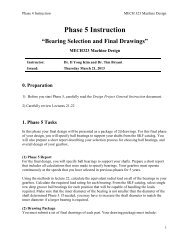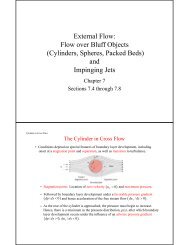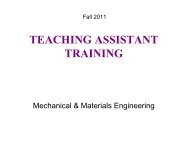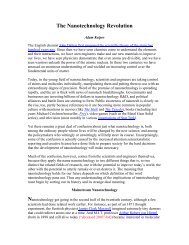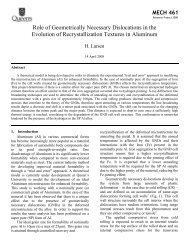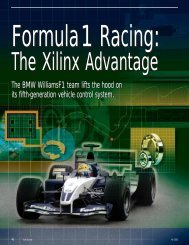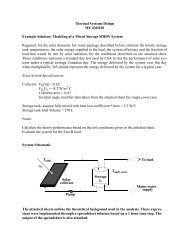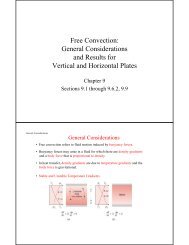Numerical Study of Passive and Active Flow Separation Control ...
Numerical Study of Passive and Active Flow Separation Control ...
Numerical Study of Passive and Active Flow Separation Control ...
Create successful ePaper yourself
Turn your PDF publications into a flip-book with our unique Google optimized e-Paper software.
Keywords: flow separation, passive <strong>and</strong> active control, vortex generator, direct<br />
numerical simulation<br />
1. Introduction<br />
At low Reynolds number, the boundary layer on the upper surface <strong>of</strong> an airfoil at<br />
incidence remains laminar at the onset <strong>of</strong> pressure recovery. As laminar flow is less<br />
resistant to an adverse pressure gradient, flow separation may occur near the leading edge<br />
<strong>of</strong> the airfoil. The separated shear layer is inviscidly unstable <strong>and</strong> vortices are formed due<br />
to the Kelvin-Helmholtz mechanism [1]. The detached shear layer may also undergo<br />
rapid transition to turbulence <strong>and</strong> the separated flow may reattach to the wall surface<br />
because <strong>of</strong> the increased entrainment associated with the turbulent flow [11] <strong>and</strong> form an<br />
attached turbulent boundary layer. The formation <strong>of</strong> the separation bubble depends on the<br />
Reynolds number, the pressure distribution, the surface curvature, <strong>and</strong> freestream<br />
turbulence level. The location <strong>and</strong> the extent <strong>of</strong> flow separation could directly affect the<br />
airfoil performance or the efficiency <strong>of</strong> the turbo-machinery. The flow separation over a<br />
wing in flight results in the loss <strong>of</strong> lift <strong>and</strong> increase <strong>of</strong> drag as well as generation <strong>of</strong><br />
aerodynamic noise.<br />
<strong>Flow</strong> control through boundary layer manipulation to prevent or postpone separation<br />
can significantly reduce the pressure drag, enhance the lift, <strong>and</strong> improve the performance<br />
<strong>of</strong> the aircraft. Traditionally, flow separation control is implemented through airfoil<br />
shaping, surface cooling, moving walls, tripping early transition to turbulence, <strong>and</strong> nearwall<br />
momentum addition. Given an imposed pressure field, the kernel in separation<br />
postponement is to add momentum to the very near-wall region [11].<br />
Among the near-wall momentum addition methods, steady or pulsed blowing jets <strong>and</strong><br />
vortex generators (VG) have been widely used. The experiments conducted by Bons et al.<br />
[6] have shown that steady Vortex Generator Jets (VGJ) have the effect <strong>of</strong> reducing or<br />
entirely eliminating the separation zone on the suction surface <strong>of</strong> the blade at low<br />
Reynolds number, while the pulsed VGJs produce a comparable improvement to that for<br />
steady VGJs but with an order <strong>of</strong> magnitude less required mass-flow. In contrast to<br />
2



